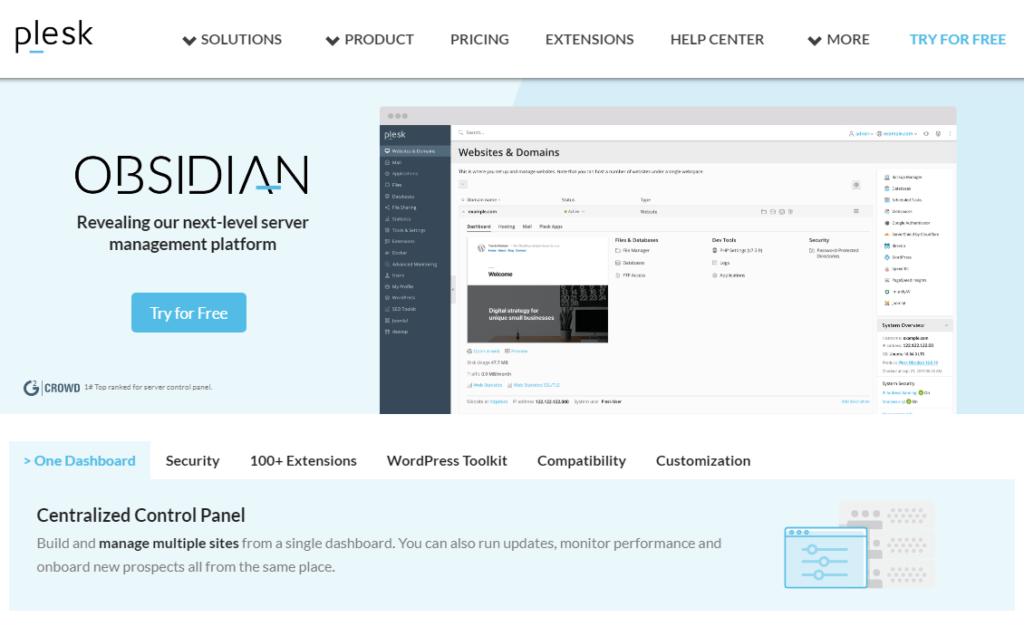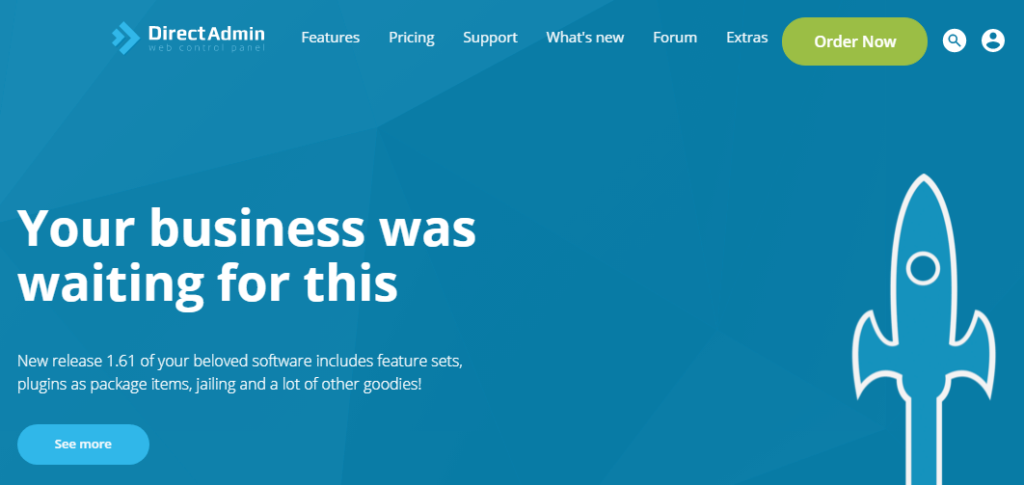Web hosting control panels are a key tool for managing your account and your website. Which ones your prospective hosts offer may even influence which company you choose to supply your server. Gaining a firm understanding of the most popular choices should make your decision a bit easier.
Below, we’ll give you a quick introduction to web hosting control panels and why they’re so important. Then we’ll break down five of the most popular options for you. Let’s get to it!
An Introduction to Web Hosting Control Panels (And Why They’re Important)
Web hosting control panels provide you with an interface and suite of tools that make interacting with your website’s server much more accessible. Most of the time, which solution you use is determined by your hosting provider.
Before web hosting control panels, most website and server management tasks required a great deal of technological know-how. This presented a significant barrier for many people.
While there are many control panels on the market, there are some features you can expect no matter which software your host provides. Some standard functions include:
- Website and domain management
- Access to branded email accounts
- Reporting for key metrics
- Some security features
- Database setup and management
- Software and app installation
In addition to these standard features, some control panels come with additional functionality. You’ll also find differences in layout, impacting how intuitive each platform is to use.
Since you’ll likely spend a decent chunk of time with your control panel, it’s crucial to select the one you’ll be happy with. While the decision primarily comes down to personal preference, it’s wise to become familiar with what each offers.
5 of the Most Popular Web Hosting Control Panels
Armed with a basic understanding of what a control panel is and does, let’s have a look at some of the options out there. Keep in mind that it’s somewhat rare to be able to choose which solution your account uses. Once you’ve decided which one you like the best, you’ll be looking for hosting providers that offer it to their customers, unless you happen to be setting up your own server.
1. cPanel

The enormously popular Linux-based cPanel is an excellent choice for beginners, thanks to the available wizards and tutorials. You can also access cPanel University if you want to hit the ground running. Its popularity also translates into a large, active community you can turn to if you have questions.
Despite being beginner-friendly, cPanel also offers features more advanced users will appreciate. A wealth of available plugins make this control panel highly customizable, so you can add functionality as your needs change.
cPanel offers one-click WordPress installation by way of the Softaculous installer. It also enables you to set up free SSL certificates for your websites. As long as you have a cPanel account, the certificate will be kept up to date automatically.
While cPanel is a favorite among end-users and hosting providers, you can’t use it on servers running the Windows Operating System (OS). It’s also significantly more expensive than some of the other options, which might translate to higher hosting costs.
2. Plesk

Plesk is another heavy-hitter in terms of popularity. This control panel works with both Linux and Windows.
You’ll likely find Plesk’s graphical interface just as intuitive as cPanel’s. However, Plesk is structured a bit differently. It’s organized by domain, with the top-level sections arranged in a side panel.
Plesk boasts some valuable services when it comes to security. Like cPanel, you can set up and maintain free SSL certificates. The platform will also take care of configuring HTTPS access for you.
If you’re using WordPress as your Content Management System (CMS), Plesk has even more to offer. It’s capable of handling all of your various security updates and patches for you. This can add up to a lot of time saved over the long run.
One drawback of Plesk is that it tends to be a bit slow on Linux servers, especially when compared to cPanel. It also doesn’t support multi-server clustering without an add-on.
3. DirectAdmin

DirectAdmin is an easy-to-use, lightweight control panel for Linux. While it’s not as widely used as Plesk or cPanel, it’s also the least expensive of these three options.
Although DirectAdmin doesn’t ship with Softaculous, you can add the installer via a plugin at an additional cost. You’ll be able to install many apps with a single click.
If you’re into metrics, you’ll likely be very impressed with the variety of statistics DirectAdmin can provide. You’ll find a complete overview of system usage. The control panel also includes Webalizer, enabling you to view hits, visits, and referrers.
While there’s something to be said for a simple interface, that simplicity does translate into fewer features. There are minimal third-party add-ons, which limits your ability to add functionality. Also, like cPanel, DirectAdmin has no Windows support.
Although it may not be as robust as other control panels, DirectAdmin could still be ideal if you’re setting up your first server and are on a budget.
4. InterWorx

InterWorx provides separate interfaces for server and web admin. NodeWorx enables you to maintain your server, while SiteWorx is where you’ll manage your websites.
While two interfaces may sound intimidating, InterWorx is exceptionally user-friendly. It’s also responsive so that you can manage your sites from your mobile device as easily as from your desktop.
While InterWorx is a solid option, there are a few drawbacks. This control panel is not compatible with Windows. There are also a few versions of Linux, including Ubuntu, that it won’t work with.
5. ISPConfig

With control panels becoming more expensive over time, some people are opting for free solutions. One of these is ISPConfig, which is an open-source control panel for Linux.
ISPConfig offers multi-server support out of the box, which you’ll probably appreciate if you’re concerned about scalability. It also supports more Linux distributions than cPanel or Plesk.
ISPConfig is well documented, but installing it still isn’t as easy as the other web hosting control panels we’ve covered. If you’re considering a host that offers this solution, it will probably install it for you.
However, if you’re setting up your own server, this is an important factor to consider. Once you have ISPConfig installed, there’s still a pretty steep learning curve. So, while the control panel is free, you may want to purchase the official user manual.
Conclusion
Choosing a web hosting control panel often goes hand in hand with selecting a host. Your decision will impact your long-term experience with your provider, and your website and server management workflow. Ultimately, which option is best will come down to precisely what you’re looking for and how you want to use it.
In this post, we shared five suggestions to help get you started on your search:
- cPanel: A popular and beginner-friendly control panel that’s offered by many hosting providers.
- Plesk: The most common alternative to cPanel, and the only option we covered that offers support for Windows servers.
- DirectAdmin: A low-cost solution that provides robust server and website analytics.
- InterWorx: A mobile-friendly control panel for on-the-go management.
- ISPConfig: A free, open-source solution that’s best for individuals who are setting up their own servers on tight budgets.
Do you still have questions about web hosting control panels? Ask us in the comments section below!
The post The Beginner’s Guide to Web Hosting Control Panels appeared first on Torque.